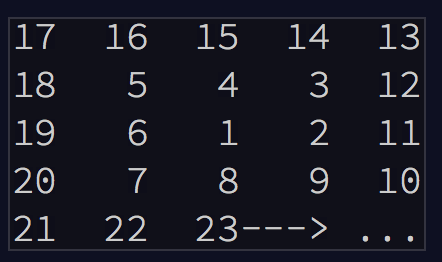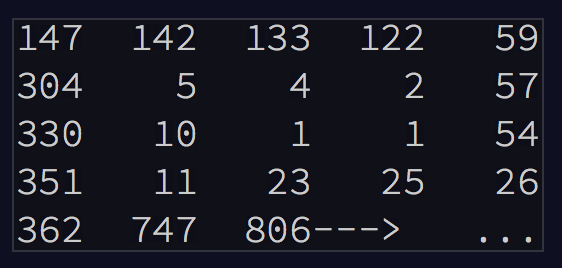This repository is dedicated to my attempts at advent of code anno 2017.
Some of the code will be somewhat quick and dirty when I first upload it, since it might be an initial attempt, however things should become somewhat clean after I've rewritten the attempts later.
For the first challenge, part one, one had to review a sequence of digits and find the `sum` of all the digits, which match the next digit in the list. This list is circular, thus the last digit will be able to match with the first digit, such that $`1221`$ will have a `sum` of $`3`$.
For the second part, one now had to, instead of considering the next digit in the list, consider the digit *halfway around* the circular list, so $`1212`$ would produce a `sum` of $`6`$.
For the second challenge, part one, the objective was to look through a bunch of lists, find the maximum and minimum value and then subtract these for each list. In the end, the results of the different subtractions had to be summed up and this would be the result.
For the second part, the calculation of the checksum had changed to now being calculated from finding the only pair of evenly divisible numbers from each list and then sum up the results of the divisions.
The goal was to look at a spiral which followed this pattern:

and then figure out what the `manhattan distance` is from the input number to the center. I noticed a pattern in the bottom left corner, $`9, 25, 49, ...`$ and then saw that the squareroot of that number concidentally was the length of the side as well. Because of this, I could find the closests number to my input, where the squareroot of that number followed that pattern, $`3,5,7`$. After I knew what the side length was, I could figure out where my input number was, relative to that and from there I could find the actual distance to the center.
For the second part, the spiral had changed slightly. Now every number was the sum of all surrounding numbers, so the spiral would look like this:

I was not able to find a particular pattern in this, so I ended up building the spiral, using the fact that Ruby allows for hashes to have a default value, so I could set that to 0 and then iniate (0,0) => 1 and from there count the the numbers around it. The implementation is somewhat ugly.